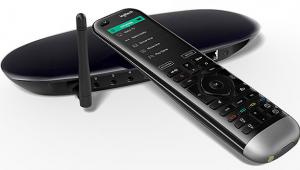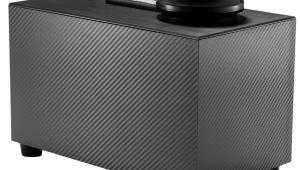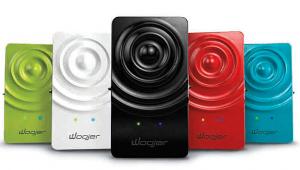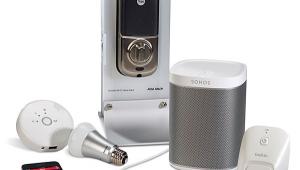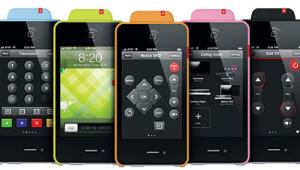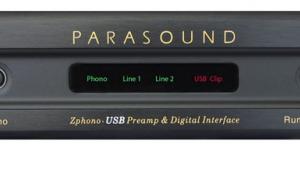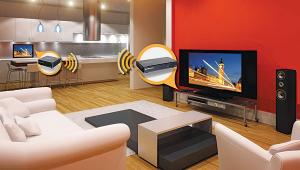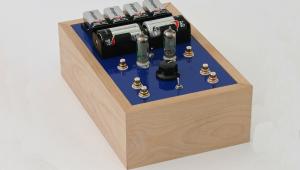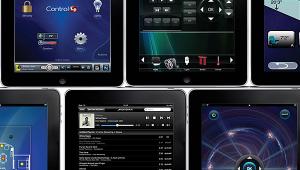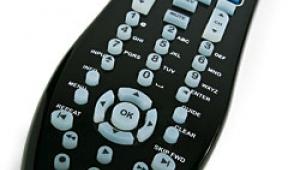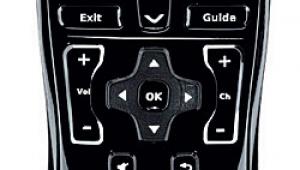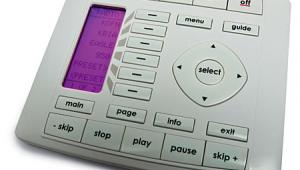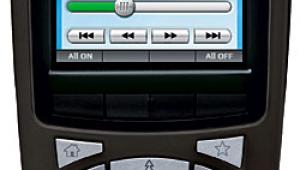Universal Remotes: Monster Central Controller AVL 300, Logitech Harmony 1000, Universal MX-3000
Yes, it's true, that each one works quite well with the device it controls. And for any given activity I generally pull just two or three of them out of the drawer to keep at my side. But even after all this time – some of these components I have owned for years – I still sometimes cannot remember for a particular remote whether the volume or channel-change control is on the left or the right, whether the pause function is deactivated by touching play or pause again. I could go on. And if I suddenly need another remote in the dark, I have to feel around until I find one that has the right shape. Sometimes I am wrong. Sometimes I give up and turn on a small flashlight I keep by my chair.
Over the years I have programmed so-called universal remotes that ship with certain components to manage other equipment in addition to the one piece the remote was designed to handle – setting up the TV remote to handle basic playback functions of a DVD player, for example. That is helpful but hardly a global solution. So for a long time I have been curious about high-end, dedicated universal remotes. You know, the models that come "naked" and are designed to adroitly handle every piece of equipment you have. So here we have assembled three of them for survey: The Monster Central Controller AVL 300, the Logitech Harmony 1000, and the Universal MX-3000.
All three are set up using a computer and proprietary software, and the Monster and Harmony remotes must be set up over the Internet. All three have backlit LCD displays, two of them touchscreens. All three have rechargeable batteries and docking stations into which you can nest the remote. The Monster and Harmony remotes each sell, list price, for $499.95 and can be programmed relatively easily by consumers. These two remotes are strikingly similar. More on that later. The Universal remote sells for $999.95 and is designed to be set up by a custom installer. And all of them did what they are advertised to do, more or less.
For those of you who may not have looked in a while, universal remotes have matured. The big thing now is "macros." If you are old enough to remember, early DOS programs used to offer macro buttons that could be programmed so that the program carried out a series of functions every time a single button, or a sequence of buttons, was pushed. So it is with remotes.
All three of these remotes and most others on the market today allow you to tell the associated software what components you have and which ones you want to turn on when you chose a certain activity. To watch a DVD, for example, you could program the remote to turn on the TV, turn on your preamp/processor or AVR and switch it to the DVD input, then turn on your TV and switch it to the proper input. For me, that alone is worth the price of admission.
I looked at each remote in turn and used it awhile before turning to the next one. I began with the Monster AVL 300, which had the most traditional look of the three– a long, narrow device that fits easily in the hand. The body of the remote is black with a wide silver band at the top that houses the LED display. It is not a touch screen. Instead it shows a series of commands, depending on what you are doing, and to activate one you push the button adjacent to the graphic.
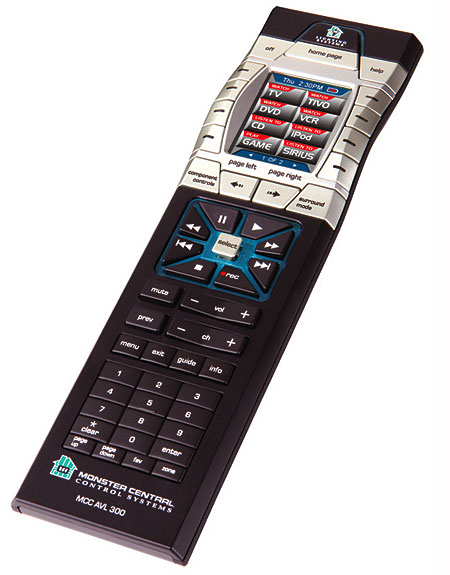
This remote, like the other three, has an interesting and useful way of determining when and how to turn on the backlight. Pick it up and the light turns on, triggered by a built-in motion sensor. Once, as I turned off the lights for the evening, I bumped into the coffee table in the dark and woke up all three of them. Together they nearly lit the room!
In truth, however, the Monster was the "dimmest" of the three. It has a tiny LCD screen, only 1.5" x 1.25 inches. And the resolution is quite low – soft, even fuzzy. The resolution appears to be even lower than on my cell phone, which I know to be 240 x 240.
As with all the remotes, this one had to be charged overnight before first use. It comes with a precarious charging cradle, a plate with low sides into which you rest the remote. But making sure that the contacts between the remote and charger are aligned takes a bit of practice. They can easily be jostled out of place. The design here is quite poor.
To set up the Monster remote, I first had to load the software. Assuming you are online, the program searches for updates as soon as it is loaded. In my case it found one, even though Monster had sent me the remote just three weeks earlier. The program leads you through a series of questions about how you use your system and what components you have. It's best to come to the computer with a list of the components you want the remote to control and their model numbers.
Be warned, however: The Monster software comes with no instructions. Nothing. It is relatively self-explanatory, but if you want to do something it did not predict, or you make a mistake, beware. You can find yourself deep in a forest with no obvious escape. The software has a help tab, but when I clicked on it, up came a blank screen.
Along the way, the software asked me to enter the make and model number for each piece of equipment I owned. It found nearly all of them, but it still asked me to place the original remotes near the Monster remote and press two or three buttons so the Monster could learn the other remote's commands. Changing or upgrading components would be relatively easy using this interface, which is a plus.
The software also asked me to connect the included "omnilink" box to the computer, too – though no cable was supplied. I didn't have another of these particular USB cables and had to go buy one. Quite irritating. But I was chagrined when I learned that the "omnilink" box was for use only if my component were in a cabinet or otherwise out of sight of an IR signal. That was not the case, and so I didn't need it. This was the first high-end universal remote I had ever used, so I simply followed the software prompts and wound up taking a trip and spending $20 unnecessarily. As I said, there are no instructions.
The Monster is also able to control lighting – lamps and light fixtures. But you have to buy light-station controllers at an extra charge for each light to be controlled. I did not try these. But the remote does not control its own lighting very well. All of the buttons have a bit of backlighting, but for some, particularly those on the bottom half of the remote, the lighting is quite dim, making the controls hard to read.
Once programmed, I tried out a macro – watch a DVD. And sure enough the remote turned everything on and set each device to the correct input or output. So I watched a DVD and tried to control everything with the remote. It was a challenge. One of the great debates in the world of universal remotes is how large to make the screen. Many users want ever-larger screens so they can see more of the controls at a time. With this tiny screen, I can understand why.
After turning everything on for watching a DVD, the Monster displayed these controls, in this order: Eject, Chapter plus, Chapter minus, audio, subtitle and aspect ratio. (The remote has dedicated buttons for play, stop, fast forward, chapter skip and pause.) The selection of controls seemed utterly random. To find other controls for the Pioneer BDP-HD1 Blu-ray DVD player, I had to push the "Component controls" button, choose the DVD player and then scroll through four pages of commands. In the end, for anything but the most basic commands, it was easier just to reach for the player's own remote.
- Log in or register to post comments

